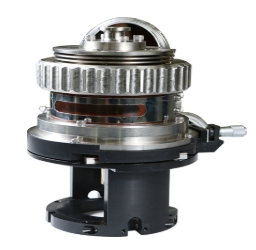
Say goodbye to traditional limitations and embark on the era of intelligent experimentation
2025-04-25 09:48To understand the changes in crystal structure of samples during high-temperature heating and the changes in mutual dissolution of various substances during high-temperature heating. In situ high-temperature attachment is an experimental device used for in-situ characterization of materials under high temperature conditions, mainly used to study dynamic processes such as crystal structure changes, phase transitions, and chemical reactions of materials during high-temperature heating. The following provides a detailed introduction from the aspects of technical parameters, application scenarios, and precautions:
一、 Technical parameters of in-situ high-temperature attachments
1. Temperature range of in-situ high-temperature attachments
Inert gas/vacuum environment: The maximum temperature can reach 1600 ℃.
Standard environment: Room temperature to 1200 ℃ (as provided in the TD-3500 XRD accessory).
2. Temperature control accuracy of in-situ high-temperature accessories: usually ± 0.5 ℃ (such as in-situ high-temperature accessories), and the accuracy of some equipment above 1000 ℃ is ± 0.5 ℃.
3. Window materials and cooling methods for in-situ high-temperature attachments
Window material: Polyester film (temperature resistant to 400 ℃) or beryllium sheet (thickness 0.1mm), used for X-ray penetration.
Cooling method: Deionized water circulation cooling ensures stable operation of the equipment under high temperature conditions.
4. Atmosphere and pressure control of in-situ high-temperature attachments:
Supports inert gases (such as Ar, N ₂), vacuum or atmospheric environments, and some models can withstand pressures less than 10 bar.
The atmosphere gas flow rate can be adjusted (0.7-2.5L/min), suitable for corrosive gas environments.
二、 Application scenarios of in-situ high-temperature attachments
1. Material research on in-situ high-temperature attachments
Analyze the changes in crystal structure (such as platinum phase transition) and phase transition processes (such as melting and sublimation) at high temperatures. Study the chemical reactions of materials at high temperatures, such as dissolution and oxidation.
2. Equipment adaptability of in-situ high-temperature attachments
Mainly used in X-ray diffractometers (XRD), such as TD-3500, TD-3700, etc. It can also be used for in-situ tensile testing using scanning electron microscopy (SEM), with customized flange connections required.
三、 Precautions for using in-situ high-temperature accessories
1. Sample requirements for in-situ high-temperature attachments
It is necessary to test the chemical stability of the sample in the target temperature range in advance to avoid decomposition into strong acids/bases or ceramic bonding. The sample shape must meet the requirements of the attachment (such as thickness 0.5-4.5mm, diameter 20mm).
2. Experimental operating procedures for in-situ high-temperature attachments
The heating rate needs to be controlled (e.g. maximum 200 ℃)/ min@100 ℃) to avoid overheating and damaging the equipment. After the experiment, the sample needs to be cooled to room temperature to prevent structural damage.

